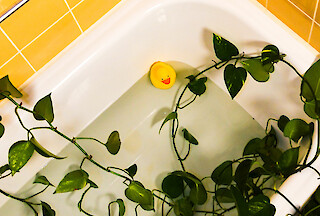
contact@estellechriste.ch
www.estellechriste.ch
@estellec_
[DE]
Domestic Wilderness taucht ein in das Wiederaufleben des kulturellen und sozialen Phänomens von Zimmerpflanzen in städtischen Gebieten als eine Möglichkeit zur Verbindung mit der Natur. Innerhalb von Häusern und Familien übernehmen Pflanzen aktive Rollen und bringen neue Dimensionen von Fürsorge und Beziehungen hervor. Mittels Trendscanning wird dieses Phänomen durch Design sichtbar gemacht. Dies ermöglicht neue Erzählweisen vom Zusammenleben mit Pflanzen.
In der aktuellen Ära des Anthropozäns verlangt die Erhaltung des Planeten eine erhöhte Aufmerksamkeit auch gegenüber nichtmenschlichen Entitäten. Die Nähe von Pflanzen im Innenbereich ist ein Ausdruck des Wunsches westlicher Gesellschaften, sich wieder mit der Natur zu verbinden. Die Grenzen zwischen Natur und Kultur, privat und öffentlich, verschwimmen.
Das Projekt adressiert diese Anliegen in einer sinnlichen, immersiven Installation, die dazu einlädt, über unsere Beziehungen zu grünen Begleitern nachzudenken, Interaktionen zu fördern und neue Erzählungen des Miteinanders mit Pflanzen zu imaginieren. Dieser intime Raum ist eine heterotope Darstellung des Zusammenlebens und porträtiert neue Familienstrukturen mit Pflanzenwesen.
[EN]
Domestic Wilderness delves into the resurgence of the cultural and social phenomenon of indoor plants in urban areas, as a means to connect to nature. Within homes and families, plants take on active roles, introducing new dimensions of care and relationships. Using trend scanning, this phenomenon is made visible through design, enabling us to imagine new narratives of cohabitation with plants at home.
In the current era of the Anthropocene, non-human entities require increased attention to keep our planet alive. Being close to plants indoors is an expression of Western societies’ desire to ‘reconnect’ with nature. The boundaries between nature and culture, and the domestic and public, are dissolving.
The project addresses those ambiguities in a sensual immersive installation which invites us to reflect on our relationships with our green companions and encourages interaction. This intimate space is a heterotopic depiction of cohabitation, portraying new family dynamics with plant entities.
How do humans and plants cohabit now and in the future?
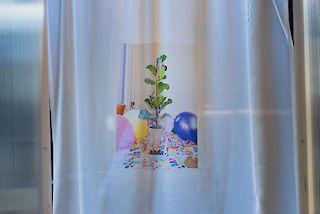
The installation imagines possible future scenarios of interacting with plants. While being embedded in today’s reality, it presents speculative narrations. It is a space of interspecies cohabitation that plays with the antropomorphisation of plants. Through pictures, audio stories, touch and space, the visitor is immersed in the world of affective relationships with plants.
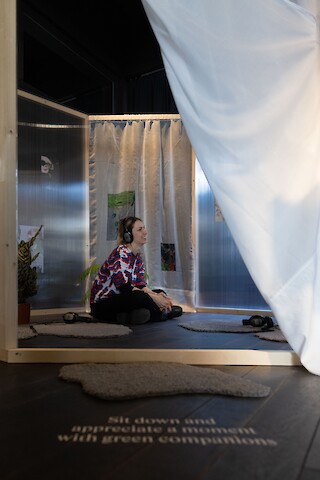
“Sometimes I say that the Monstera, like joking, that it's my baby because it's so big and I really have to watch after it once in a week.”
Nora, 2023, Home visits interview
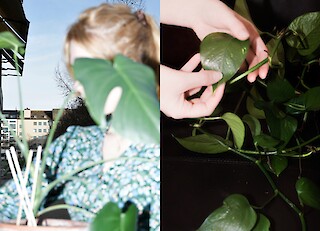
“Yeah, I think they're part of me. And I really like to take care of them and it's not like a cat, but it goes in the same direction.”
Paula, 2023, Home visits interview
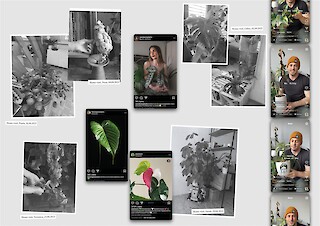
Human beings build affective relationships with plants – according to the intensity of the bond, I categorized them from plants as familiar aliens to plants as living objects, plants as silent healers and plants as exotic relatives.